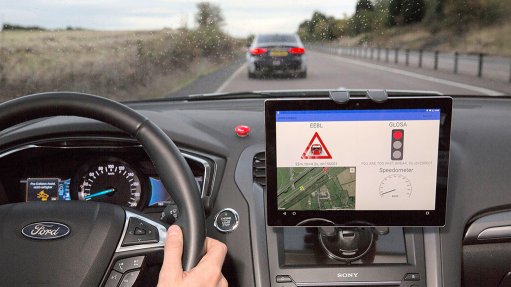
Imagine taking the kids to school, driving to work or across town to do some shopping without ever hitting a single red traffic light.
US carmaker Ford is testing technology that could make ‘riding the green wave’ a day-to-day reality.
Green Light Optimal Speed Advisory uses information on traffic light timing from a roadside unit to display to drivers the optimal speed to travel to secure a green light.
Ford is trialling the technology to help demonstrate the benefits of connected cars for UK Autodrive – the UK’s largest self-driving and connected car trial.
The 16-member, partly publicly funded £20-million project is developing and trialling vehicle-to-vehicle and vehicle-to-infrastructure technologies that could make driving less stressful and time-consuming, while also improving fuel efficiency.
“There’s not much worse after a long day than to hit one red light after another on the drive home, and be forced to stop and start again at every junction,” says Ford Research and Advanced Engineering driver assist technologies supervisor Christian Ress.
“Enabling drivers to ride the green wave also means a smoother, continuous journey that helps to improve the flow of traffic and provide significant reductions in carbon dioxide emissions and fuel consumption.”
Recognising that it is not always possible to hit a green light, the system also tells drivers how long until the light turns green.
Drivers in the UK behind the wheel daily spend, on average, two days each year waiting at red lights, says Ford.
Similar technologies already enable cyclists in Copenhagen and Amsterdam to avoid red lights.
The Mondeo hybrid cars provided by Ford are also trialling Emergency Electronic Brake Lights, which warn when a vehicle up ahead suddenly brakes hard – even if the incident occurs out-of-sight – up to a distance of 500 m.
Technologies that will also be trialled next year tell drivers when another vehicle is blocking the intersection ahead; warns drivers when an ambulance, police car or fire truck is approaching; and prioritise vehicles arriving at intersections without traffic signs or traffic lights.